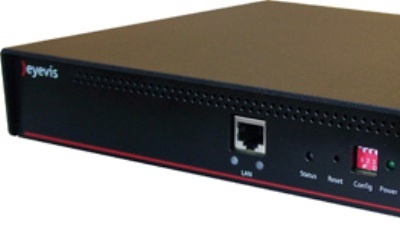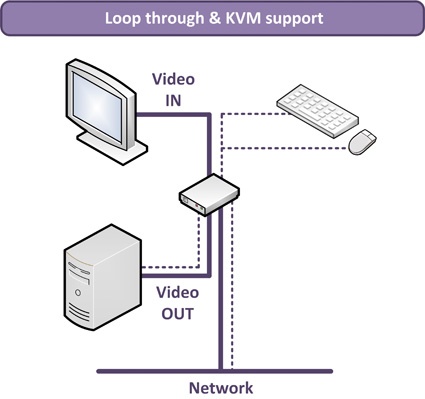An Efficient Method of Splitting DVI Video Signals to Multiple Devices
In the past, the distribution of DVI signals was implemented using hardware based matrix switchers. These are devices with a finite number of signal inputs and outputs. There are a...


In the past, the distribution of DVI signals was implemented using hardware based matrix switchers. These are devices with a finite number of signal inputs and outputs. There are a number of situations however where it is required to provide the same video signal simultaneously at various locations to a potentially unknown number of viewing devices such as monitors, beamers and PCs in a one-to-many topology. The Reutlingen, Germany-based company eyevis has come up with a solution for so-called estreaming.
The possibility to transmit this type of signal over large distances is gaining in importance in modern installations as DVI signals often have to be transmittable to any location or device, such as a beamer or display cube, without any limitations. The Eyevis estreaming solution provides a flexible and scalable technology to convert the video stream into data packets and send it in real time with low latency over networks. The signals can be fed in and extracted in high quality at any point in the network, which effectively creates a virtual network matrix out of the network infrastructure. The system is based on an encoder/decoder solution which transmits the signal over networks after applying a special Eyevis eJPEG compression.
The Estreamer eS100 is used together with standard Ethernet switches and networks and can be configured either as an encoder or as a decoder, or work simultaneously in both modes. In this way an existing configuration can be flexibly rebuilt or expanded; a very useful and helpful attribute for rental purposes or in projects with quickly changing configurations.
The View From Afar
But the eS100 has another neat trick up its sleeve: it can function in KVM mode, which means that it can be connected to the keyboard, video and mouse sockets of a PC/server and, through its networking capability, provide remote control to a remote VNC client effectively anywhere in the world. This is a hardware alternative and may be preferred for security-critical installations over the various remote control software packages on the market that must be installed on the PC/server itself.
The areas of application of the solution are very diverse: this technology can be applied anywhere that DVI signals need to be distributed to different screens, for example, to replace existing DVI-matrices or to distribute video signals to several conference rooms or halls at multiple locations within a building. The solution is equally suitable for use by companies as well as by public institutions or operators of secure areas. The main advantages are the easy configuration, the ability to use the existing network infrastructure and the scalability of existing Estreaming projects.
Business Partner
eyevis Gesellschaft für Projektions- und Großbildtechnik mbHHundsschleestr. 23
72766 Reutlingen
Germany
most read

Machine & plant safety: The winners of category A at the GIT SECURITY AWARD 2026
GIT SECURITY AWARD 2026: Machine & plant safety - an overview of the most innovative solutions

Five Questions with Intersec Saudi Arabia Exhibition Director Riham Sedik
Intersec Saudi Arabia 2025: Exclusive Insights with Riham Sedik, Exhibition Director

Security management, building security & perimeter protection: the winners of category E at the GIT SECURITY AWARD 2026
GIT SECURITY AWARD 2026: Security management, building security & perimeter protection - an overview of the most innovative solutions


Is Your Venue Ready for Martyn’s Law?
Martyn’s Law demands stronger security by 2027. Is your venue prepared to protect and respond?









